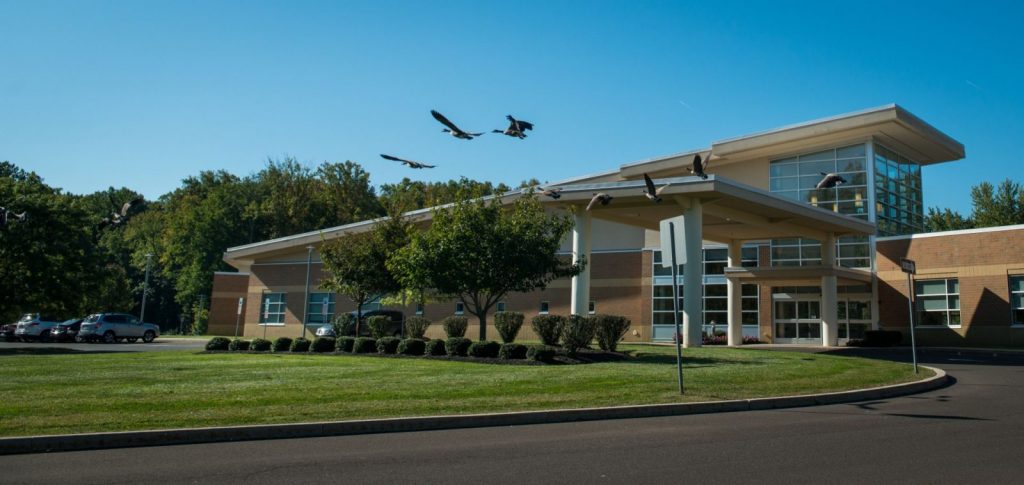Each year in the U.S., doctors and behavioral health professionals diagnose an estimated 3 million individuals with SAD – Seasonal Affective Disorder.
What is seasonal affective disorder? It’s a type of depression that’s directly related to the changes in seasons. SAD typically begins in the fall, intensifies during winter, and resolves in the spring. People experiencing SAD witness fatigue, low energy, lack of concentration, extended periods of sadness, changes in their weight, and more. The symptoms of SAD are different for everyone who suffers from it, ranging from mild to severe, and mental to physical. Some people may question “Is seasonal depression real?”– it is, and SAD is treatable with the help of a professional.
Causes of SADness
Researchers and medical professionals are still determining what causes SAD, but there are some leading theories. Less sunlight and shorter days may be linked to a chemical change in the brain that contributes to the cause of SAD. Many professionals have attributed SAD to a change in melatonin in the body—a hormone important for maintaining our normal sleep−wake cycle. Too much melatonin can add to sleepiness and lead to oversleeping. A deficiency in vitamin D may also affect mood in people. Some vitamin D is produced in the skin when it’s exposed to sunlight. Decreased sunlight during the winter could mean a lack of sufficient vitamin D.
Other possible triggers of SAD include aversion to excessive cold or hot weather, and seasonal allergies. It is important to note that medical professionals can help you determine the root cause of your depression and provide treatments that will address your personal condition.
Symptoms of Seasonal Affective Disorder
 Symptoms of winter SAD mirror those of depression. They vary with each individual and can change over the course of the season, fluctuating from mild to severe. Some common symptoms to look for include:
Symptoms of winter SAD mirror those of depression. They vary with each individual and can change over the course of the season, fluctuating from mild to severe. Some common symptoms to look for include:
- Daytime drowsiness
- Increased sleep during the day
- Fatigue and low energy
- Feelings of sadness, hopelessness, and guilt
- Loss of interest in your favorite activities
- Social withdrawal
- Increased sensitivity to rejection
- Irritability
- Decreased sex drive
- Inability to think clearly, focus, or concentrate
- Physical ailments, like headaches or weight loss/gain
Though less common, some individuals experience SAD during the summer, with symptoms like insomnia, decreased appetite, and anxiety.
If symptoms last for more than a few weeks, you may want to seek professional help. An earlier diagnosis is best for getting optimal treatment.
Effective Treatments for SAD
 Each individual experiences SAD in a different way with different symptoms and a different intensity. To find the most effective treatment for seasonal affective disorder, it’s important to consult a medical professional. Once a professional evaluates your condition, they will develop a personalized treatment plan to manage your SAD. This plan may use some of the following interventions:
Each individual experiences SAD in a different way with different symptoms and a different intensity. To find the most effective treatment for seasonal affective disorder, it’s important to consult a medical professional. Once a professional evaluates your condition, they will develop a personalized treatment plan to manage your SAD. This plan may use some of the following interventions:
Psychotherapy and Counseling
- Cognitive-Behavioral Therapy (CBT): This form of therapy helps in altering negative thought patterns associated with SAD. Therapists help you identify and challenge these patterns to enable more positive thinking and behavior.
- Mindfulness and Stress Reduction Techniques: These practices aid in managing the emotional and physical stressors of SAD, encouraging a more present-focused approach to daily life.
Medication Management
- Selective Serotonin Reuptake Inhibitors (SSRIs): These are often prescribed to manage symptoms of SAD, as they help increase serotonin levels in the brain.
- Vitamin D Supplements: Given the potential link between Vitamin D deficiency and depressive symptoms in SAD, supplementation can be an important aspect of treatment.
Light Therapy
- A cornerstone treatment for SAD, light therapy involves exposure to a bright lightbox that mimics natural outdoor light. It is most effective when used for about 30 minutes a day, preferably in the morning.
Lifestyle Modifications
- Outdoor Activities: Spending time outdoors, even during colder or cloudier days, to increase natural light exposure is strongly encouraged.
- Exercise: Regular physical activity, especially aerobic exercise, can significantly improve mood and energy levels.
Environmental Adjustments
- Maximizing Natural Light: Simple changes like opening blinds and arranging seating areas near windows can make a significant difference.
- Temporary Change of Location: Though somewhat complicated, moving temporarily to a place with different weather or temperatures may help alleviate some symptoms.
Getting the Sadness out of SAD
At The Center for Behavioral Health at Woods, our team of experienced therapists, psychiatrists, and counselors offers personalized care plans to help you manage your depression. We believe in an integrated approach, combining psychotherapy with medical treatment, lifestyle coaching, and continuous support. Learn more about what seasonal affective disorder is, some possible causes and recommended treatments in this interview with expert Ryan Garrison, a Licensed Professional Counselor at The Center for Behavioral Health at Woods.
If you or someone you know is struggling with SAD, remember, this is a treatable condition. Schedule a consultation here or call us at 215-750-4004 to get more information. Let us help you find your path to better mental health, whatever the season.


